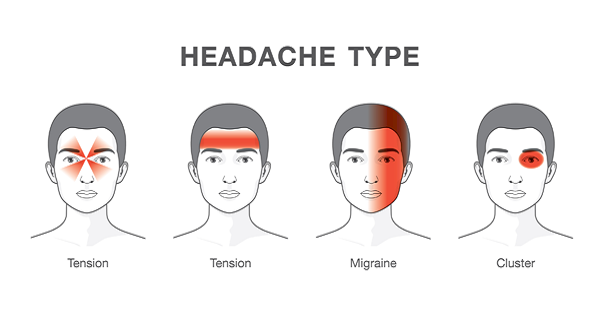Headaches are ones of the most common health issues, and they can be of various types. Therefore, you need to find out the trigger of the pain in order to treat it.
Sometimes, headaches are a result of dehydration and fatigue, but they also might be a symptom of some more serious health issues.
According to Dr. Sakib Qureshi MD, a famous neurologist, headaches can often be manifested by “red light warning signals”, so in order to spot the real danger, you need to learn these symptoms and distinguish between common headaches and the signs of a health problem.
Painkillers offer temporary effects only, and they can bring about a long list of side-effects.
On the other hand, we will reveal the 4 most common headache types, and the natural ways to relieve them:
Tension Headache
This is the most common headache type, believed to be a result of stress that contracts the muscles of the scalp and neck.
It manifested by a constant pressure or pain at the temples, or in the back of the head and the neck. You might also experience a radiating pain above or below the eyes which leads to vomiting and nausea.
Treatment: Mix peppermint oil and ginger tea to relieve tension headaches.
Add some peppermint oil to the hairline to soothe the head and neck muscles, while the ginger tea will relieve the inflammation.
Cluster Headache
Women are more prone to cluster headaches, which are felt over one eye, and occur in a cycle or in a group. The pain they cause is sudden and intense, often accompanied by a nasal congestion, a watery eye or a rainy nose.
The cause is still not specified, but a cluster headache is an activated nerve pathway in the base of the brain.
Treatment: Apply a bit of capsaicin cream to the nostril to create a barrier of the nerve pain signals.
Sinus Headache
These headaches are caused by an infection and lead to intense pain and pressure on the cheeks, eyes and forehead, and a fever.
Treatment: Drink lots of liquids, as well as warm water, which relieves the inflammation and opens the sinuses.
You should consume oranges, and foods high in vitamin C, as it is rich in antioxidants and fights infections, fresh ginger, due to its powerful anti-inflammatory properties, and soups. The application of cold and hot compresses will be of great help as well.
Migraine
Migraines affect people of all ages, but the most prone include the ones between the age of 25 and 55.
A migraine is a complicated headache type, manifested by intense, severe, throbbing pain on only one side of the head, as well as nausea, numbness and tingling in the face, dizziness, vomiting, visual disturbances, extreme sensitivity to light, smell, touch, and sound.
These symptoms radiate from the top of the head descending.
Treatment: You should optimize your levels of magnesium, omega-3 fatty acids, and vitamin B12 (riboflavin), and try aerobic exercise, as scientists have found that it can provide better effects in preventing migraine attacks than the preventative migraine medication topiramate.
